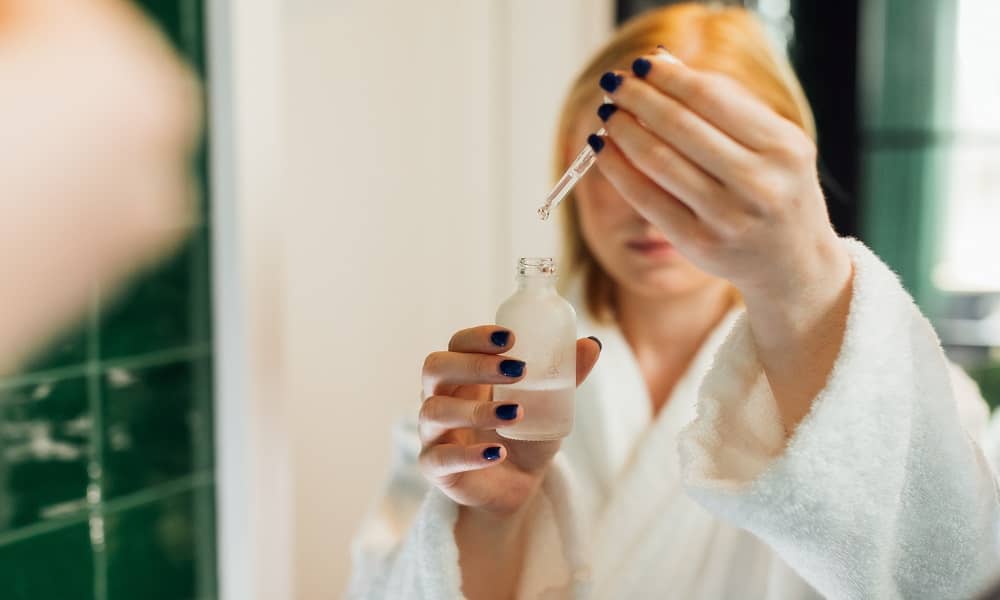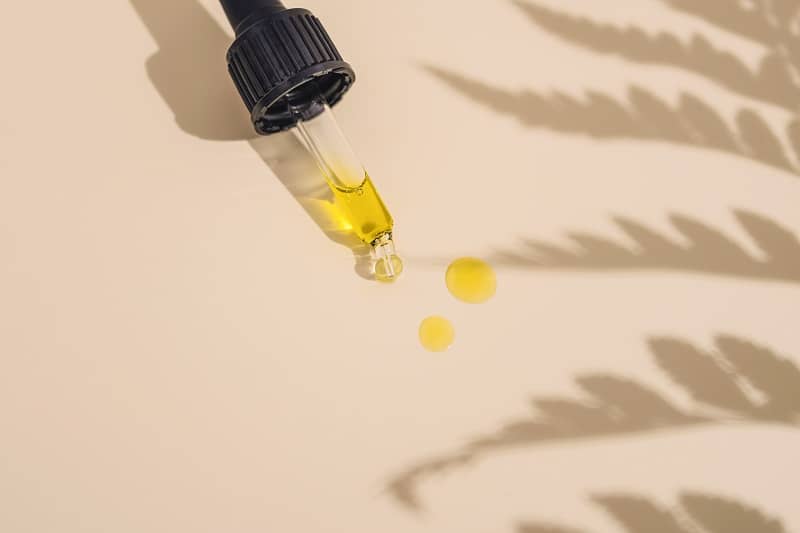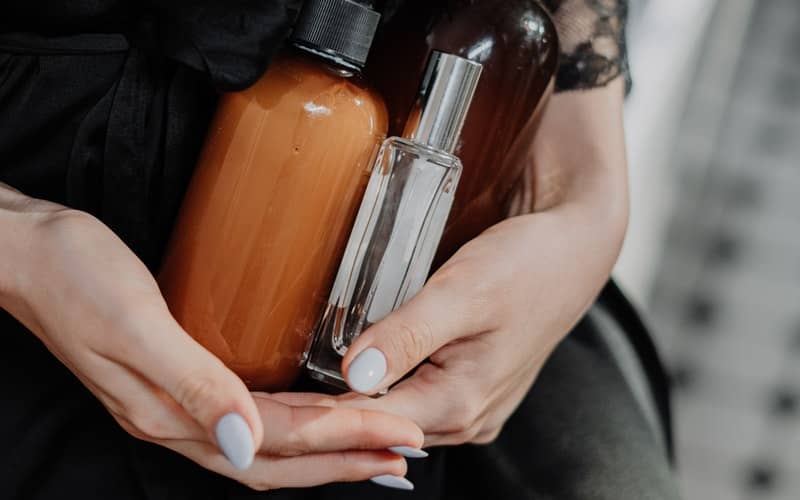


01 Mar How and When to Use Skincare Actives in Your Routine? [W/ Retinol]
If you’ve been actively following a skincare routine, you might be aware of some of the main active ingredients in skincare by now. But do you know how to use actives in skin care?
Feeling overwhelmed while walking the beauty aisle is common and absolutely natural. Millions of alluring skincare products with a radiating face on attractive packaging are unarguably hard to resist.
Every cream claiming to deliver radiating, spotless, and baby soft skin doesn’t make it any easier to choose the right product.
Nonetheless, what’s most important is to look at its ingredients.
“Active Ingredients” in skincare products have been creating a lot of buzz lately.
So, what is active ingredient in skin care?
Actives in skincare are simply the ingredients that can bring drastic changes in the appearance, feeling, and biochemical behavior of the skin.
Once you start using active ingredients, there’s no looking back!
However, it is of utmost importance to be aware of some basic knowledge about active skincare ingredients. For instance, how to combine skincare actives the right way, so you don’t face adverse effects.
So, without wasting any more time, let’s begin with what are actives in skin care and how to use them.
What Are Actives In Skincare?


Actives in skincare are often the soul of your product.
To explain, active ingredients in any skincare product are the natural and scientifically-backed ingredients that target a specific skin concern.
These ingredients in the right concentration add benefits to the product and make it effective.
Active ingredients are the real deal.
These ingredients transform your skin at a cellular level and nourish it to deliver a much rejuvenated, hydrated, and repaired skin.
Essentially, these are the real heroes of the skincare product.
Furthermore, when we compare active vs inactive ingredients in skin care, inactive ingredients only make the product smell nice and feel smooth, whereas active ingredients provide natural and safe benefits to the skin.
So, what are these “active” ingredients?
Best Active Ingredients In Skin Care
Your skin has to go through a lot.
So, instead of investing in your skincare products blindly, look for active ingredients that will bring noticeable changes and are suited to your skin type.
Here’s a list of active ingredients to look for in your skincare products:
- Retinol
- Vitamin C
- Hyaluronic Acid
- AHA & BHA
- Niacinamide
It’s now time to discuss these active ingredients in detail.
#1. Retinol
PH LEVEL – 5.0-6.0
Retinol is known as the “miracle” active ingredient.
It treats a lot of skin problems like acne, wrinkles, sunburn, fine lines, premature aging, hyperpigmentation, uneven skin tone, and even collagen loss.
By far, retinol is the most clinically-backed skincare ingredient. And dermatologists often recommend it to clear up acne or reduce the signs of aging.
However, it may increase skin dryness and inflammation depending on skin sensitivities. And some irritation is actually part of the process for first-time users.
Why Should You Use Retinol?
- Baby soft skin
- Firm skin
- Prevents early-aging of skin
- Subdue sun damage
- Soothes acne-prone skin
#2. Vitamin C
PH LEVEL – 3.5 0R LOWER
Vitamin C is not only a prominent active ingredient but also a highly effective antioxidant.
The presence of this active ingredient in your skincare can make your skin even, remove tan, reduce dark spots, and prevent the formation of wrinkles and hyperpigmentation.
Though, you can observe some skin irritation on the application in some rare cases.
Why Should You Use Vitamin C?
- Improves Complexion
- Provides Uniform Skin tone
- Increases Firmness Of Skin
#3. Hyaluronic Acid
PH LEVEL- 5.0-8.0
Hyaluronic acid is one such active ingredient that’s a boon for such skin types that lack hydration.
It is an ingredient that boosts hydration and moisturizes the skin from within.
If you are someone dealing with dry, dull, and rough skin, using skincare products with hyaluronic acid will activate and restore your skin cells.
However, bruising, redness, and swelling can be some of the adverse effects for some sensitive skin types.
Why Should You Use Hyaluronic Acid?
- Balances Skin Hydration
- Provides Radiant Skin
- Prevents Early Signs Of Aging
- Makes The Skin Supple And Youthful
#4. AHA (Alpha Hydroxy Acid) and BHA (Beta Hydroxy Acid)
PH LEVEL – 3.2-3.9
If you want clear-looking, radiant skin, ignoring exfoliation would be your biggest mistake.
And if you want to exfoliate, AHAs are the best. AHAs are chemical exfoliants of the water-soluble class. These active ingredients help remove dead skin cells. Also, AHAs prevent whiteheads and blackheads.
These are also great at treating wrinkles and maintaining even skin tone.
For these properties, AHAs like lactic acid and glycolic acid are often found in serums and toners.
On the other side, BHAs are great for acne-prone skin and can take great care of enlarged pores.
Not to mention, BHAs are oil-soluble substances and can help eliminate bacteria mixed with sebum to prevent acne.
This makes BHAs great for getting rid of pollution particles and makeup remnants.
However, take it slow when using AHA and BHA if you’ve extremely sensitive skin. You might expect temporary redness, burning, and mild stinging.
Why Should You Use AHA and BHA?
- Natural Exfoliating Ingredient
- Unclogs The Pores
- BHA dissolves bacteria
- Treats Acne
#5. Niacinamide
PH LEVEL – 5.0-7.0
If you are at beginner level in your skincare routine and feel confused, Niacinamide is great to start with.
This active ingredient is derived from B vitamins and is great at minimizing the appearance of skin pores. Additionally, it also soothes skin inflammation.
It is, in a sense, a 2-in-1 ingredient.
Moreover, it is a versatile ingredient and is safe for rosacea-prone skin.
While niacinamide may cause dry skin at the beginning for some, it is a proven ingredient considered safe for use by all skin types.
Why Should You Use Niacinamide?
- Balances oil secretion
- Reduces the appearance of pores
- Minimizes fine lines
- Treats acne
So, these were some of the common active skincare ingredients that you need to look for on the ingredients list while adding your favorite product to the cart.
However, knowing only about the active ingredients will not be of much help. Learning how to use actives in skin care will help you reap better benefits.
How and When to Use Actives in Skincare Routine?
Skincare is divided into two parts:
- Day time skincare
- Nighttime skincare
Which ingredient to use and when to use it depends upon the quality of the ingredient and its effects on the skin. It also depends upon its reacting factors.
Morning Skin Care Active Ingredients
Your morning skincare routine should include ingredients that offer protection.
It is the time when your skin has to face UV rays, stress, and excessive pollution.
Hence, your morning skincare routine should include Vitamin C, hyaluronic acid or niacinamide moisturizer, and SPF.
Vitamin C is not only a great antioxidant but also protects your skin from skin damage. Hence, it is a great addition to your AM skincare routine.
Hyaluronic acid, on the other hand, maintains the moisture of your skin.
Evening Skin Care Active Ingredients
Your nighttime skincare routine should include active ingredients that focus on skin rejuvenation, relaxation, and treatment.
It is the time when your skin needs to relax, get rid of the stress, and the entire day’s pollution.
Therefore, your nighttime skincare routine when it comes to choosing active ingredients should have mainly retinol, AHAs, and BHAs.
To elaborate, retinol exfoliates the skin and is sensitive against UV rays. Hence, it is recommended to use retinol only in your PM skincare regime.
While using retinol, it’s important to use only a pea-sized quantity. Start with even lower quantities until your skin gets used to it.
Furthermore, AHAs and BHAs should also be used in the evening. It is because they can react with vitamin C and can lead to skin sensitivity.
It’s important to include any of these active skincare ingredients at the right time of the day to heap major benefits out of it.
Not to mention, there are a lot of active ingredients; henceforth, it is also of utmost importance to know how to layer actives in skincare to avoid any side effects.
How To Layer Skincare Actives?



When you are trying to incorporate different active ingredients in your skincare regime, you should know the right way to layer and combine the actives.
There are two ways to combine active skincare ingredients in your routine.
#1. On the Basis of Consistency [Thinner to Thicker]
This way of layering the active ingredients depends on the consistency of the ingredients.
Begin with cleansing your face and applying a water-based toner and serum right away. This helps penetrate the actives into the skin nicely and allows them to work effectively.
In the end, conclude it with creams and SPF to seal the routine.
#2. On the Basis of pH Level [Lowest to Highest]
This way of incorporating different active ingredients is based on the ph level of the products.
That is to say, you should apply the products of lower pH levels first and the actives with higher pH at the end.
Vitamin C, AHAs, and BHAs fall under active skincare ingredients with lower pH levels. These should be applied right after cleaning your face, no matter what time of day you are using them.
Actives with lower pH levels sink better; hence, should be applied first.
Whereas, actives with a higher pH should be applied later. These skincare actives include hyaluronic acid, retinol, niacinamide, and face oils.
There is one more way to combine the skincare actives.
If following a multi-step skincare routine, proper layering is needed. All in all, applying your skincare products with active ingredients in them could be a game-changer. Talking about game changers, retinol is the ace up one’s sleeve when it comes to taking care of skin. Also known as vitamin A, retinol has some superpowers that bring unimaginable transformation to your skin. While many know about the incredible benefits of using retinol, they often don’t pay much attention to how to layer skin care with retinol. Interestingly, this also happens to be the most searched queries as well. Retinol is a staple active ingredient of many skincare products and numerous skincare routines. However, despite all of its benefits, many people are afraid to add it to their skincare regime. In reality, when you know what retinol does to your skin, it becomes easier to incorporate it into your beauty routine. There are certain rules to layering skincare with retinol one must be aware of when they don’t know how to use actives in their skin care routine. Note that retinol is also used after applying the moisturizer to reduce the adverse effects for sensitive skin types. Do what suits you the best and patch test when you first start to use it. Retinol is a powerful exfoliator and using it comes with certain precautions. #1. Always apply retinol at night to avoid sensitivities from UV rays. #2. Use only a pea-sized amount to cover your entire face. #3. If you are a new retinol user, start using it only 2 times a week. After your skin gets used to it, you can gradually increase its application. #4. If your skin gets dry easily, you can use moisturizer first and then apply retinol. #5. Don’t expect instant results, give it some time. Retinol is a powerful active skincare ingredient and applying it correctly can make your skin stand out. While some active ingredients like hyaluronic acid go well with retinol, some other active ingredients are not compatible with retinol. If you are incorporating retinol in your skincare, avoid scrubbing your skin too much. It can damage the upper layer of your skin. Adding to it, skip waxing, laser treatments, and any other hot treatments because retinol works on skin cells and is also sensitive to light. Moreover, it is an exfoliator, so maintain distance from acidic products, or else you’ll end up getting irritated, flaky, and red skin. Benzoyl peroxide and retinol literally nullify each other’s effect. So, there’s no point using these together. Moreover, AHA/BHA are exfoliators, and using them with retinol can cause severe skin irritation and may damage the skin. Unfortunately, not! As for Vitamin C, it protects the skin. Whereas, retinol rebuilds the skin. Plus, there’s a huge gap between the pH level of retinol and vitamin C. The pH level of retinol lies somewhere around 5.0 – 6.0. Whereas, the pH level of vitamin C (L-ascorbic acid) is at 3.5 or below. As a result, when you use these together, the pH of retinol declines, and the pH level of Vitamin C increases. This can lead to making retinol less effective and vitamin C unreachable to your skin. Hence, it is recommended to use them separately in your skin regime. However, there’s a solution to your problem. There are certain vitamin C derivatives as well. These are different from ascorbic acid (Vitamin C) in that they have different pH values and are milder. So, can you use retinol with Vitamin C derivatives? Let’s find out… The best way to use Vitamin C and retinol together is to use retinol with Vitamin C derivatives. So, what are Vitamin C derivatives? Vitamin C derivatives are not the pure form of L-ascorbic acid. Hence, they are more constant in nature and less irritating on your skin. Some of the derivatives of Vitamin C include ethyl ascorbic acid, ascorbyl tetraisopalmitate, ascorbyl glucoside, sodium ascorbyl phosphate, and magnesium ascorbyl phosphate. To use a Vitamin C derivative with retinol, you can use the derivative with a pH level that’s closer to your retinol. Retinol and a suitable Vitamin C derivative, when used together, can literally slow down skin aging dramatically. Where retinol can produce collagen, Vitamin C helps hold those cells together. When used together, retinol and Vitamin C derivative can help you get: Moving on, not every skincare routine is for all types of skin. The thumb rule to get major benefits out of your skincare routine is to first choose the right ingredients for your skin type. Skincare is not just a regime but an entire lifestyle in itself. And one must understand that every skin will react differently to different products. ALSO READ: How Should I Use Retinol in Skincare? No doubt, active ingredients are the game-changers in the world of skincare. However, not every active skincare ingredient is for everyone. If you don’t know how to use actives in your skin care routine, you might end up witnessing the dark side of the moon. So, when incorporating a regime, always pay attention to how many actives in skincare routine are you adding and how to layer it effectively for better and safer results. They say excess of anything good is bad. So, educate yourself properly about how to layer skincare actives before you apply them. Hope you found this blog informative. If you know someone with a beauty regime, share this blog with them and let them know if they are doing it right. PEOPLE ALSO READ: Benefits and Side Effects of Phytoceramides in Skincare Routine How To Layer Skincare With Retinol?
Here’s how to layer skincare with retinol:
Few things to keep in mind while applying retinol:
What Not to Use With Retinol?
Avoid mixing retinol with:
Can You Use Retinol and Vitamin C Together?
Can I Use Vitamin C Derivatives With Retinol?
Get Started With Active Skincare



No Comments